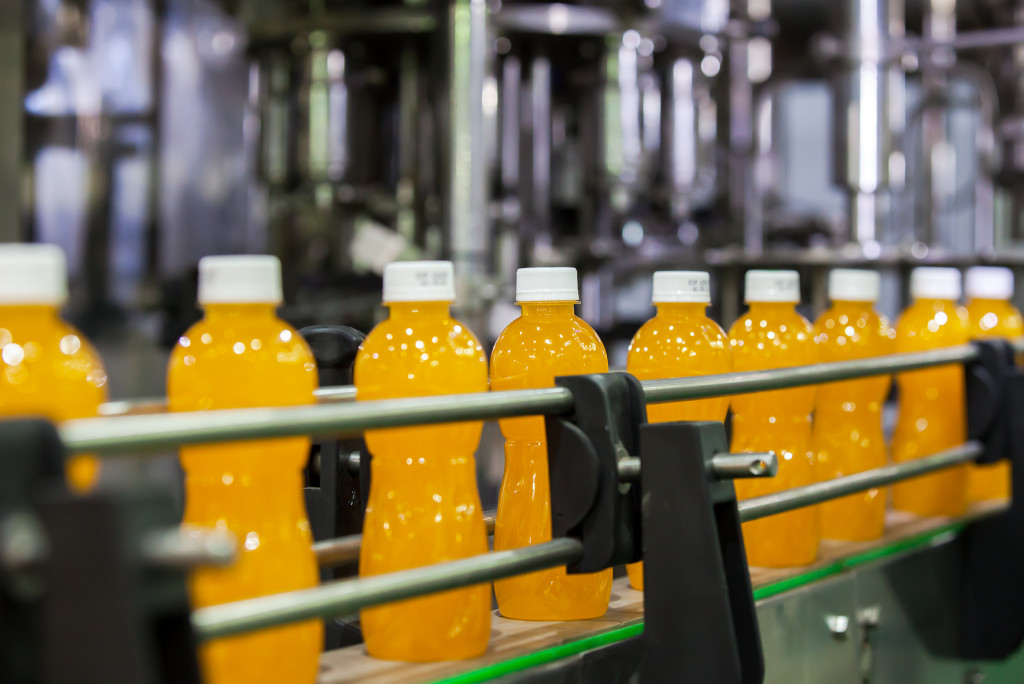- Analyzing and optimizing the production process is critical to improving efficiency in the beverage industry.
- Investments in high-efficiency machines can significantly enhance production speed, accuracy, and consistency.
- Sustainable packaging materials appeal to eco-conscious consumers and can reduce environmental footprint.
- Efficiency in production and packaging processes can boost profitability while reducing waste and environmental impact.
Given its consistent demand and consumer trends, the beverage industry presents a highly profitable business opportunity. According to the Beverage Market Corporation, the U.S. beverage market was valued at $1.8 trillion in 2022. This steady growth is fueled by a burgeoning population, evolving consumer preferences, and an increasing inclination towards healthier drink alternatives. Furthermore, data from Grand View Research predicts the global non-alcoholic beverage market will reach $1.60 trillion by 2025, exhibiting a CAGR of 5.8% during the forecast period. This growth trajectory gives potential entrepreneurs an optimistic view of profitability in the beverage industry.
Building a beverage business, however, can be a daunting task. With numerous factors to consider, making the production process as efficient as possible is crucial. This not only ensures profitability but also reduces waste and maximizes resources. Here are a few steps to consider in making beverage production efficient.
Analyze Production Process

The first step towards efficiency is thoroughly analyzing and understanding your current production process. This involves mapping out every process step, identifying bottlenecks, and highlighting areas where resources are wasted. Evaluating the production process can help uncover hidden inefficiencies, paving the way for optimization and improvement. Suitable approaches to production process analysis include time and motion studies, workflow analysis, and bottleneck analysis.
Time and Motion Studies
Time and motion studies involve observing and recording tasks to determine how long they take and how they could be accomplished more efficiently. This approach can help highlight areas where time is wasted, allowing you to streamline tasks and increase productivity.
Workflow Analysis
Workflow analysis involves examining the flow of materials and actions through the production process. This can help you identify inefficient practices, such as unnecessary steps or repetitive tasks, and develop strategies to eliminate them.
Bottleneck Analysis
Bottleneck analysis focuses on identifying areas of the production process where flow is restricted, causing delays or inefficiencies. Once these bottlenecks are found, you can take targeted action to alleviate these constraints and improve the overall efficiency of the production process.
Resource Utilization
Resource utilization involves monitoring how efficiently you use your available resources — including raw materials, equipment, and labor. This can reveal areas where resources are being wasted or underutilized, providing opportunities for improvement.
Investments in Machines for Efficiency

Investing in high-efficiency machines, specifically those offered by leading liquid filling machine manufacturers, can significantly impact your entire beverage production process. These machines significantly increase production speed, accuracy, and consistency, which directly translates to increased profitability. For example, automated bottle-filling machines minimize manual intervention, reducing errors and enhancing productivity. They also ensure precise measurement of liquids, reducing wastage and ensuring product consistency.
Similarly, investing in advanced capping machines can improve sealing, prevent spillage, and maintain product quality during transportation. For those prioritizing packaging, labeling machines offer precise and high-speed labeling operations, positively impacting the final product presentation.
In essence, these investments not only improve the efficiency of the production process but also elevate the overall quality of the end product, giving your beverage brand a competitive edge in the market. It’s a win-win situation for beverage entrepreneurs eyeing long-term growth and sustainability.
Sustainable Materials for Packaging
Utilizing sustainable materials for packaging is another significant step towards efficiency in the beverage production process. Sustainable packaging not only appeals to the growing number of eco-conscious consumers, but it also helps reduce your company’s environmental footprint. Materials such as recyclable plastic, glass, and biodegradable materials can be used to create attractive and eco-friendly packaging.
Here are a few tips for efficient utilization of sustainable packaging materials:
- Opt for Lightweight Materials: Lightweight materials reduce the product’s overall weight, resulting in lower transportation costs and fewer carbon emissions.
- Consider the Packaging Design: A well-designed package can minimize material use while protecting the product. This can lower material costs and reduce waste.
- Prioritize Recyclable and Biodegradable Materials: Materials such as glass, aluminum, and certain types of plastic are fully recyclable, reducing waste going to landfills. Biodegradable materials break down naturally over time, providing an even greener option.
- Focus on Supplier Relationships: Work closely with suppliers who prioritize sustainability. They can provide insights into the latest sustainable materials and technologies, helping to keep your company at the forefront of eco-friendly practices.
By adopting these practices, beverage companies can make their packaging process more efficient and sustainable, enhancing their brand reputation and appeal to consumers.
Final Thoughts
Efficiency is crucial in any business, and the beverage industry is no exception. Entrepreneurs can improve their bottom line by analyzing production processes, investing in high-efficiency machines, and utilizing sustainable packaging materials while reducing waste and environmental impact. These steps also help keep businesses competitive in an ever-evolving market, ensuring long-term growth and success.

